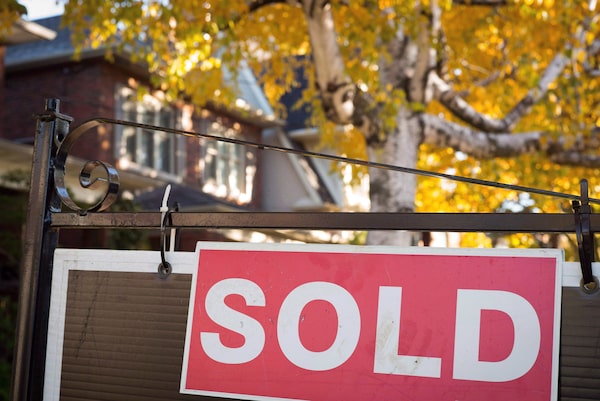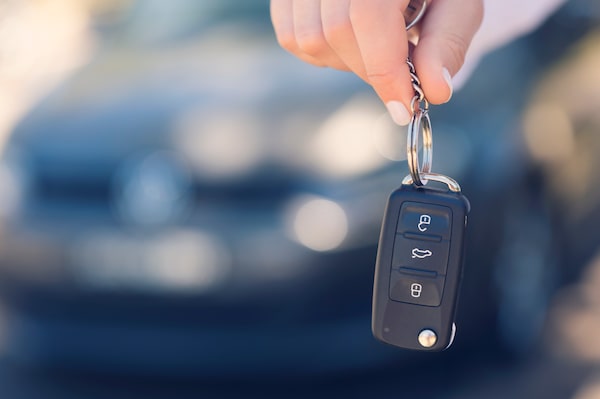Debt is a major issue in many Canadian households – and a major stress factor.
A national survey of financial wellness shows an increase in the number of people who are spending more than they earn, who can’t pay all their bills on time and who borrowed to pay for daily expenses. The annual Financial Health Index from Seymour Consulting also shows that stress levels about money have soared compared to the past two years. Another survey, by Manulife Bank of Canada, finds that two in five indebted Canadians don’t expect to escape debt in their lifetimes.
But there are steps you can take to get your financial house in order. Here’s The Globe’s guide to debt, what you need to know about it and how best to manage it.
Credit scores
First, know your score
Your credit score is a ranking that lets potential lenders know how likely you are to make good on your payments. The time to start thinking about your credit score is before you’re planning to make a big purchase, such as a house or a car.
Step one is finding out what your score is. In addition to bureaus such as Equifax, a growing number of financial players now offer free access to credit scores, including many big banks, online lender Borrowell and financial websites such as Credit Karma Canada and Ratehub.ca.
According to RateSpy.com, a credit score of 650 or more will get you a half-decent interest rate on a mortgage, 680 or more will improve things and 720 and up will get you the lowest rate possible.
How to ensure a healthy credit score:
- Make payments on time, including minimum payments on a credit card.
- Be careful cancelling long-held credit accounts or adding new ones. It will affect the average age of your debts, which is a factor in assessing your credit history.
- Payments on student loans and cellphone bills count; utilities such as electricity and heat don’t.
Mortgages

Graeme Roy/The Canadian Press
What you need to know about shopping for the best rate
If you’re hunting for deals online, some of the great rates you see may not be available to you. Look for asterisks and fine print that explain who qualifies. Mortgage rates are notably better for people who put less than 20 per cent down and thus have what’s called a high-ratio mortgage. Rates vary among provinces, and if your market has fewer mortgage lenders beyond the big banks, there may be less intense competition. Sometimes, the lowest rates are for what’s known as a quick-close mortgage of 60 days or less.
Find out how much you can afford for a down payment
Saving up can take years. Try our Down Payment Tool to see how long it’ll take to get ready for a down payment in the city of your choice.
Are reverse mortgages worth it?
Reverse mortgages allow owners to draw down on their home’s equity without paying interest until they sell. They’ve been marketed to seniors with money issues as a way to stay in their homes into retirement. But there’s a catch, Globe personal finance columnist Rob Carrick warns. The interest rate charged on a five-year reverse mortgage can be almost that charged on a standard five-year mortgage.
If you’re considering taking out a reverse mortgage, ask yourself how much equity you’ll likely have at the end, and whether that’s enough to cover needs like long-term care.
Related:
- No, it is not OK to be ‘house poor’
- When it comes to mortgage break penalties, big banks are often the worst
- Want to save money on your mortgage? Have drinks with your neighbours
- A primer on the first-time home buyer credit, and some things to consider
Lines of credit: home equity and unsecured
The ABCs of HELOCs
A home equity line of credit (HELOC) is secured against a property owner’s home, providing that the outstanding mortgage balance and HELOC not exceed 80 per cent of the home’s value. It’s a popular borrowing option with Canadians: In 2017, they extracted $49-billion in home equity, according to Bank of Canada researchers.
While the rates can be cheaper than many other sources of credit, the potential downside to HELOCs is the risk of getting into more debt than you can possibly pay back. According to a survey by the Financial Consumer Agency of Canada, roughly one in four respondents who had a HELOC had a timeline for repaying what they owe that ranged from five years to never. A little more than one-quarter always or mostly made only the minimum monthly maintenance payment of interest every month. Thirteen per cent of HELOC holders in the survey said they frequently used their credit line to meet payments on other debt, such as a mortgage or credit card, and another 16 per cent said they sometimes did this.
Tips for using an unsecured line of credit
Unlike a HELOC, an unsecured line of credit is not guaranteed by an asset. It’s generally for a smaller amount than a HELOC, with a higher interest rate. Used properly, it can be a good way to finance a purchase or home renovation, or be the source of emergency funds. It’s a good idea to set yourself a hard deadline for paying it back in full, so you’re not just making minimum payments and keeping the debt alive. Also resist the urge to use it to pay day-to-day expenses.
Credit cards
How best to use credit cards and which one is right for you
BernardaSv/Getty Images/iStockphoto
Credit cards are undoubtedly a convenient way to pay for purchases, especially as paying in cash is at times no longer an option. They’re also an easy way to establish a credit history for when you want to make larger purchases down the road, such as buying a home. They can help students going off to college or university, or even earlier, learn how to manage money. The key is to use credit cards responsibly. Ideally, that means paying off the balance in full every month.
There are many choices on the market these days, from cashback cards to those that offer travel rewards. Some charge annual fees for a roster of benefits, while others offer basic options at no charge. The key is finding one that fits your spending habits and has rewards that matter to you.
Problems can arise, however, with the potential to overspend then not be able to pay your bill in full. Canadians are carrying roughly $78-million in outstanding balances on their credit cards, according to recent Bank of Canada figures, at average rates of about 19 per cent. If you find you’re carrying a balance on your credit card, consider parking it for a while and use your debit card instead.
Related:
- Five ways to avoid a credit card hangover this holiday season
- My husband and I have four maxed-out credit cards. How can we fix our finances?
- How to get out of debt? Freeze your credit card – literally
- A turbo-charged but dangerous way to earn more credit card reward points
Student loans
Higher education often means higher debt
There’s no doubt that many students in this country are carrying large debt loads. About half of graduating students leave school with some degree of debt, with the average sum being about $26,000, student groups say. Borrowers typically take between nine and 15 years to fully pay off their federal loans, according to government documents, which note payments can eat up as much as 13 per cent of a recent graduate’s income.
The latest federal budget offered some relief to postsecondary students who are borrowing to get an education. The interest rate on the overwhelmingly popular floating rate version of student loans fell from the prime rate plus 2.5 percentage points to prime. Fixed-rate loans fell to prime plus two percentage points from prime plus five points. Both current and new borrowers benefit.
Further relief comes from a move to eliminate interest charges on student debt during the six-month grace period on loan payments that starts when a student graduates. On the federal election campaign trail this fall, the Liberals made a pledge for grads struggling to land continuing well-paid work: They won’t have to start repaying their loans until they make at least $35,000 in income, and payments can be put on hold if income falls below this level.
Related:
- Students, here’s a way to be financially responsible when debt is inevitable
- Follow the rule of tens to keep a cap on student debt
- Don’t blame parents for the student debt problem in Canada
Auto loans

courtneyk/stock
Dealerships vs. financial institutions
Canadians looking to finance an auto purchase have a number of options, including directly through a dealership or with their financial institution.
Dealership financing has proved popular: About two-thirds of Canadians applied for financing at the dealership when they purchased their last new or used vehicle, according to analytic software organization FICO. As well as the convenience of one-stop shopping, promotions and discounts such as zero-per-cent loans, no-down-payment and cashback options are driving this trend.
Meanwhile, buyers who go through their financial institution are dealing with the organization that likely issued their mortgage and credit cards, and may be able to suggest options to fit with their overall financial plan. One bank financial planner suggests getting a loan pre-approval to get a realistic view of what you can afford before you go car shopping.
More on debt
- Less savings, more debt: Inside a multi-decade shift in Canadians’ finances
- A ‘how do I compare’ guide for millennials on savings, debt and home ownership
- The emerging threat to personal finances in a cashless world: Paying with plastic doesn’t feel as painful as cash
- Why household overspending is worse than the federal deficit